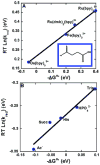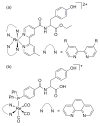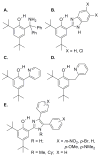Proton-coupled electron flow in protein redox machines
- PMID: 21082865
- PMCID: PMC3005815
- DOI: 10.1021/cr100182b
Proton-coupled electron flow in protein redox machines
Figures




















References
-
- Saraste M. Science. 1999;283:1488. - PubMed
-
- Hinchliffe P, Sazanov LA. Science. 2005;309:771. - PubMed
-
- Sazanov LA, Hinchliffe P. Science. 2006;311:1430. - PubMed
-
- Tsukihara T, Aoyama H, Yamashita E, Tomizaki T, Yamaguchi H, Shinzawaitoh K, Nakashima R, Yaono R, Yoshikawa S. Science. 1995;269:1069. - PubMed
-
- Iwata S, Ostermeier C, Ludwig B, Michel H. Nature. 1995;376:660. - PubMed
Publication types
MeSH terms
Substances
Grants and funding
LinkOut - more resources
Full Text Sources

